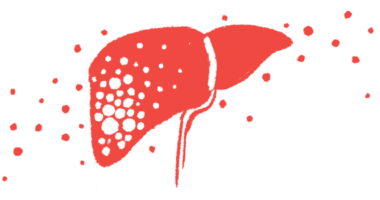Supplements of Vitamin D May Boost Its Blood Levels in EPP Patients

Vitamin D supplements can increase the levels of that vitamin in the blood of patients with erythropoietic protoporphyria (EPP), a Danish study reports.
However, a fraction of EPP patients have persistently low levels of vitamin D, highlighting the need for close follow-up and monitoring.
The study, “The effect of vitamin D recommendations on serum 25-hydroxyvitamin D level in patients with erythropoietic protoporphyria,” was published in the journal Nutrition.
EPP, the most common form of childhood porphyria and the third most common in adulthood, is characterized by skin photosensitivity due to the accumulation of porphyrins in red blood cells and other tissues. Porphyrins can react to sunlight, causing pain and damage to several organs, such as the liver.
People with EPP often have vitamin D deficiency due to their limited sun exposure. As a result, patients are usually recommended to monitor their vitamin D levels and prescribed vitamin D supplements.
However, few studies have investigated the effects of vitamin D supplementation.
To answer this, a team of researchers at the Copenhagen University Hospital in Denmark analyzed blood levels of 25-hydroxyvitamin D (25(OH)D) — the active form of vitamin D — in a group of 46 Danish EPP patients who were advised to take vitamin D supplements.
Patients were followed for a median of 11 years (range from 2003 to 2021). The median age at the last blood analysis was 43. Of the 46 patients, 19 experienced periods of mild to moderate high levels of alanine transaminase (ALT), a liver enzyme that when elevated may indicate the presence of liver damage and inflammation.
In total, each Danish patient had a median of 13 blood samples analyzed, totaling 721 samples.
Levels of 25(OH)D below 30 nanomoles per liter (nmol/L) were seen in 17.5% of the patients, corresponding to a situation of vitamin D deficiency. Almost a third (29.4%) had 25(OH)D levels between 30 and 50 nmol/L, reflecting a situation of vitamin D insufficiency. More than half (53.1%) had 25(OH)D levels between 50 and 175 nmol/L.
The lowest levels of 25(OH)D were detected in February (median concentration of 46 nmol/L) and the highest in August (median of 69 nmol/L). During summer, 25(OH)D levels were significantly higher than in winter. No significant differences were seen between men and women.
Fifteen (33%) patients, with an overall median vitamin D level of 77 nmol/L, had no need for additional counseling besides the general vitamin D supplement recommendation.
The remaining 31 (67%) patients had 74 individual vitamin D counseling sessions for low 25(OH)D levels (median of 29 nmol/L). At the end of the counseling sessions, almost three-quarters of the patients (72%) had a blood analysis conducted one year after vitamin D supplement recommendation; 7% after two years, 5% after three years; and 16% had no analysis.
At follow-up, the median 25(OH)D concentration was 47 nmol/L.
Seven patients required over three additional consultations for vitamin D counseling due to several episodes of low 25(OH)D. Following consultations, their median levels of 25(OH)D were 50 nmol/L.
No correlation was seen between the levels of 25(OH)D and of porphyrins, specifically PPIX, in any of the groups (patients who required vitamin D counseling and those who did not).
Researchers then compared 25(OH)D levels seen in Danish EPP patients with those of the general Danish population, as well as with those in a group of British EPP patients who did not take oral vitamin D supplements.
In every month, the median 25(OH)D level in the Danish EPP group was lower than that of the general Danish population — a median difference of 13 nmol/L. In the months of September and October, the difference was even more pronounced, with 75% of all 25(OH)D measurements performed in EPP patients being under the median of the Danish general population.
When compared to the British EPP group, the median levels of 25(OH)D level in the Danish EPP group were higher by a median of 15 nmol/L. Overall, the median monthly 25(OH)D level was significantly higher in the Danish group.
Overall, “this study shows the positive effect of vitamin D recommendations on serum 25(OH)D in patients with EPP,” the researchers wrote.
However, since a fraction of patients had sustained vitamin D insufficiency, “follow-up on vitamin D status and recommendations are essential to increasing 25(OH)D levels,” they wrote.







